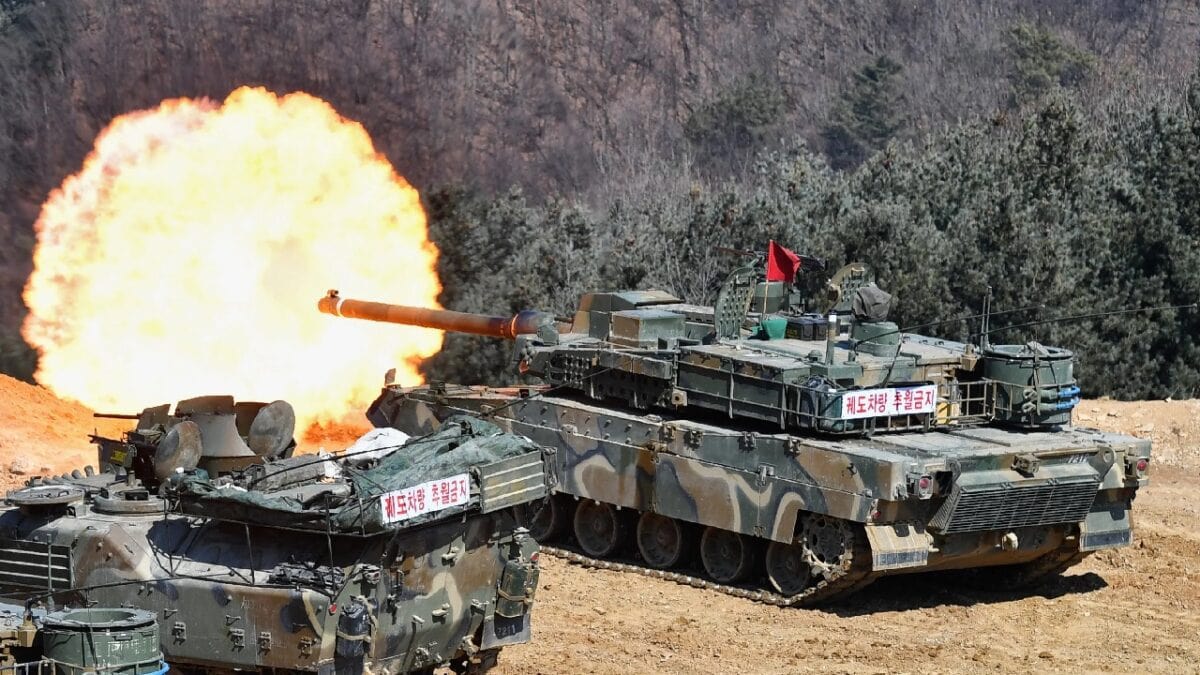South Korea Has Become an Arms Exporting Powerhouse: Poland has continued to bolster its defenses in recent months and has increasingly turned to countries around the world to supply it with military hardware. In addition to a $1.48 billion contract with U.S.-based General Dynamics Land Systems for 250 M1A2 System Enhancement Program version 3 (SEPv3) main battle tanks (MBTs), it signed an agreement on Wednesday to buy 288 artillery rocket launchers from South Korea – following a prior deal for tanks and howitzers.

Image: DSME Handout.
South Korea has become a major provider of small arms to Poland.
The first 18 of the Chunmoo rocket launchers will be delivered early next year and according to Defence Minister Mariusz Błaszczak, the weapons will be deployed to protect eastern Poland near the border with Belarus, which remains Russia’s closest ally.
The latest deal follows a $5.8 billion contract between Warsaw and Seoul for a multitude of weapons platforms. Poland will eventually be equipped with 180 K2 Black Panther MBTs, as well as 212 K9 self-propelled howitzers – with the initial two dozen to be shipped by 2026, while 10 of the tanks will be delivered by 2025. Warsaw has further agreed to purchase 48 FA-50 fighters from South Korea, which are on track to be delivered next year.
South Korea: An Asian Arms Powerhouse
For a nation that was literally fighting for its very survival just six decades ago, South Korea has become an Asian arms powerhouse. The country had endured centuries of subjugation from China followed by decades of Japanese control, and as a result, South Korea has been determined not to allow that to happen again.
Though the country was traditionally heavily reliant upon the United States in supplying defense equipment to support its military force, it has become a major defense manufacturer. As of 2022, South Korea has a defense budget that is the world’s 10th largest in size, but it has also become the world’s 10th largest defense exporter, accounting for 2.1 percent of the world’s total defense exports.
By being able to develop and grow its domestic defense industry, South Korea has further been transformed into a global exporter of military hardware and it is on track to overtake other exporters. Currently, South Korea is the only Asian nation exporting arms to NATO members.
Number Four?
In the world of sports, “the podium” consists of the top three, and being fourth is often considered a shortcoming – yet, becoming number four in the world is now a goal of South Korean President Yoon Suk Yeol. In his address to reporters last month, marking his first 100 days in office, he laid out the efforts Seoul is taking to move up the list of arms exporters.
“By entering the world’s top four defense exporters after the United States, Russia and France, the (South Korean) defense industry will become a strategic industrialization and a defense powerhouse,” Yoon said at the presidential office.
The recent deals with Poland have certainly put South Korea on track to reach Yoon’s target.
“South Korean companies make no secrets of their aim to become major players on the global arms market,” Siemon Wezeman, a senior researcher with the Stockholm International Peace Research Institute’s (SIPRI) Arms Transfers Program, told the Japan Times. “For many it is an important segment of their total market. In that respect they are very similar to the large U.S. and European arms producers.”

K2 Black Panther. Image Credit: Creative Commons.

K2 Black Panther. Image Credit: Creative Commons.
Yoon has largely been building on initiatives started under his predecessor, Moon Jae-in, whom Yoon succeeded in May. It may be bad for some American defense contractors, who have often sold their wares to South Korea, but good for the United States and its interests as it makes for a strong ally that can help supply weapons to other allies.
U.S. politicians often like to say, “America is back,” but the lawmakers in Seoul could as likely declare, “South Korea is here!”
A Senior Editor for 19FortyFive, Peter Suciu is a Michigan-based writer who has contributed to more than four dozen magazines, newspapers, and websites with over 3,000 published pieces over a twenty-year career in journalism. He regularly writes about military hardware, firearms history, cybersecurity, and international affairs. Peter is also a Contributing Writer for Forbes. You can follow him on Twitter: @PeterSuciu.

